German Army General's Post-1943 Visor Cap (with cloth insignia)
CATEGORY: Version
SKU: 20.GOR.01.01.01.01.002.000
Estimated market value:
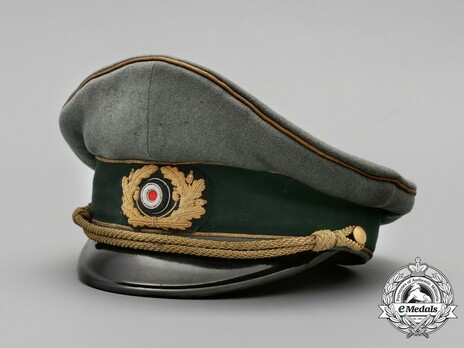
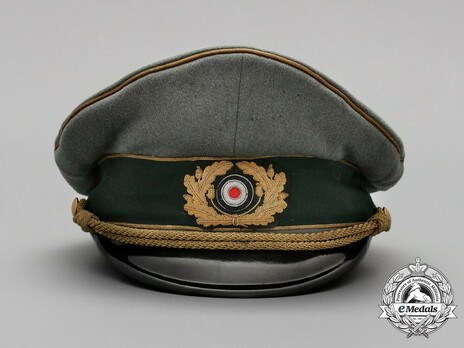
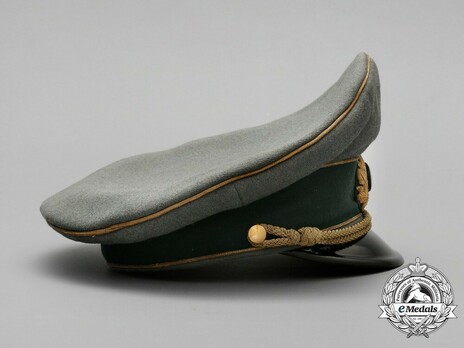
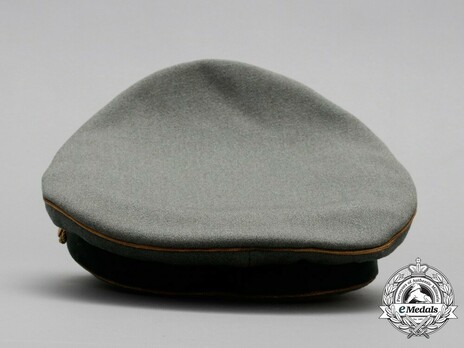
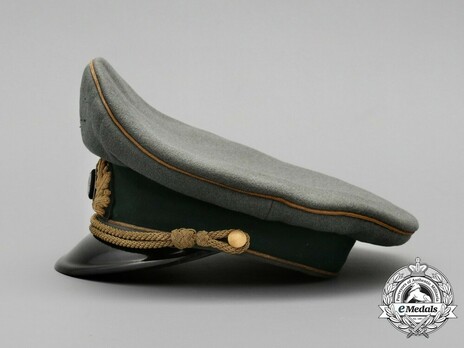
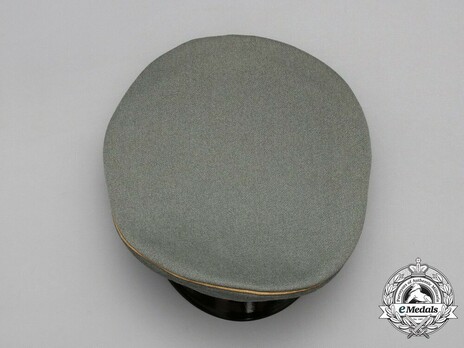
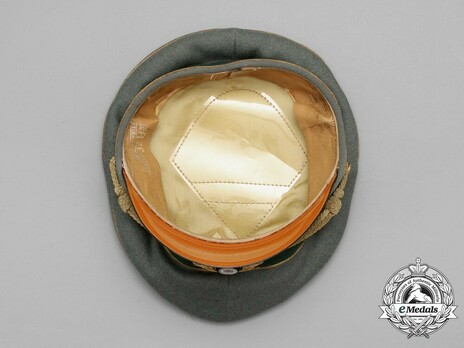
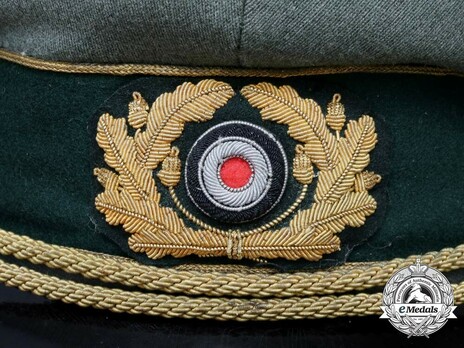
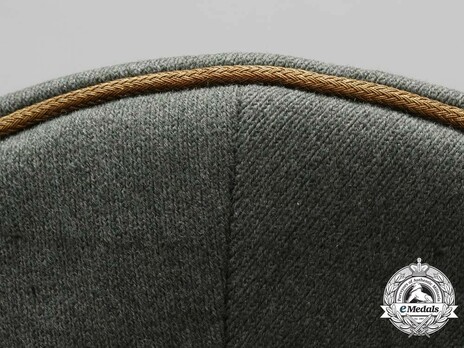
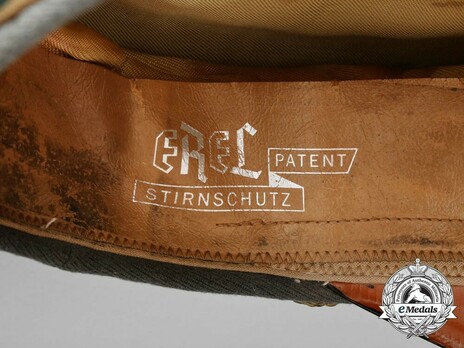
Estimated market value:
This cap is in standard Heer (Army) green doeskin wool with a 43 mm hunter green wool band and a traditional high peak with matching finely braided gold-coloured bullion piping along the top edge and flanking either side of the band. The well-detailed eagle insignia on the peak has been lost to time, although the outline and the original threading of the badge are quite visible. There is an open-ended wreath of oak leaves in gold-coloured rolled bullion wire, in various textures, on the band below, the veins of the oak leaves defined by raised twisted gold-coloured wire, surrounding a tri-colour cockade on the band, the cockade with an embroidered black base incorporating four silvered bullion wire rings and a red felt centre, the wreath and cockade mounted to a hunter green wool base. The upper of the visor is in a smooth black vulcanfibre, with a gold-coloured bullion cord resting upon it, in two rows, knotted in the appropriate-style on the sides and held in position via pebbled gilt posts on both sides, the visor with a reddish-brown synthetic underside. The sweatband in butterscotch-coloured leather, with the ends of the sweatband meeting at the rear and are stitched together. It is stamped in silver-coloured ink "EREL STIRNSCHUTZ PATENT" on the left side, along with being perforated along the front edge with five tiny rows of forty ventilation holes each, interlaced with sixteen larger perforation holes that have been added by the original owner. The inside of the cap is lined in a greenish-yellow rayon, with the dome brandishing a clear celluloid moisture shield, with its maker identification marks having worn off with time, the cap measuring 220 mm x 267 mm x 140 mm in height overall. The cap exhibits light crazing on the black vulcanfibre visor, along with soiling on the sweatband and the rayon lining from active use, the exterior free of mothing, the gold-coloured bullion piping free of interruptions, with the stitching intact throughout. It continues to exhibit smooth quality in the wool, plus quality workmanship, maintaining its original period look. As worn and untouched.
The Visor Cap was not a newly developed garment. It had already been well established in the 1920s. The pattern that was used during the Third Reich was established in 1931.
The cap was made of a field grey-green woolen top, a dark green cap band, and a black leather visor. There are three bands of piping, one along the top, one above the cap band, and one below it. Piping is in the colour of the branch type of the wearer, except for General ranks, who had gold-coloured piping.
Enlisted men and NCOs wore a black leather chinstrap. Officers up to General ranks wore a silver-coloured chincord, whereas General ranks wore a gold-coloured one.
The cap has an eagle insignia on the front of the cap band and below it a national cockade in red, white, and black with a circle of oak leaves.
Before 1943, General caps used silver-coloured insignia. In 1943, this was changed to gilt insignia.
Prices will vary significantly depending on the branch, since caps of certain branches are rare.
Branch colours on German Heer headgear was as follows:
Black was worn by Engineer units.
Black/White was worn by Panzer Engineers.
Copper Brown was worn by Motorcycle personnel.
Light Brown was worn by Signals units until 1936, and by Construction troops.
Carmine was worn by the Führer Staff, General Staff Officers, Staff Officers of the Supreme Command of the Army, and all Veterinary branches.
Bordeaux Red was worn by Smoke & Chemical personnel.
Wine Red was worn by Judicial officials.
Bright Red was worn by Generals, Artillery units, and Ordnance Officers (until 1944).
Rose or Pink was worn by all Armored units (including Panzer troops, and Schützen Brigade Staff).
Orange was worn by Recruiting personnel, Ordnance troops, Ordnance Officers (since 1944), and Field Gendarmerie units.
Bright yellow was worn by Cavalry units, and Light Division Staff.
Lemon yellow was worn by Signal units.
White was worn by Infantry units.
Light Grey was worn by Propaganda personnel.
Grey-Blue was worn by Sonderführer (Specialist Officers).
Violet was worn by Chaplains and Field Bishops.
Cornflower Blue was worn by Medical units, and Supply units.
Bright Blue was worn by Transport troops.
Bright Green was worn by Jäger and Mountain units.
Grass Green was worn by Panzer Grenadier units (Armored Infantry).
Dark Green was worn by Administrative personnel.

Comments
Sign in to comment and reply.


Scroll Top